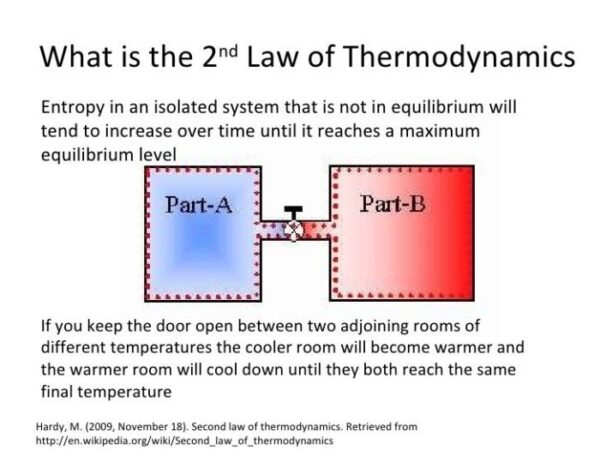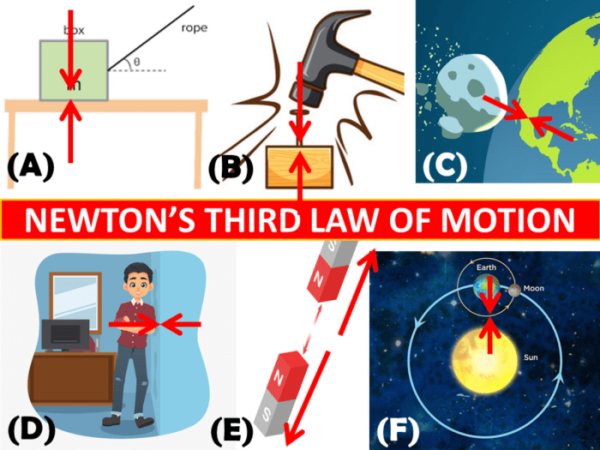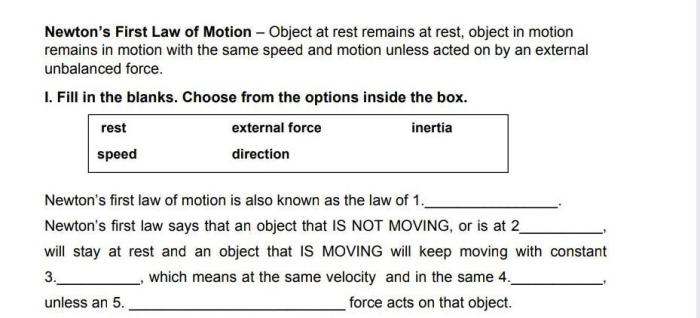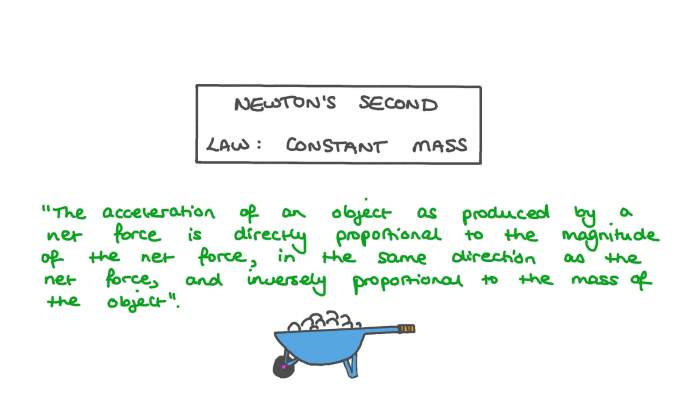
What are the laws of physics? They are the fundamental principles that govern the behavior of everything in the universe, from the smallest particles to the largest galaxies. These laws, often expressed as mathematical equations, describe how objects move, interact, and change over time. From the elegant simplicity of Newton’s laws of motion to the mind-bending complexities of quantum mechanics, these rules offer a framework for understanding the world around us.
Throughout history, scientists have strived to uncover these fundamental laws, leading to groundbreaking discoveries that have revolutionized our understanding of the cosmos. From the invention of the steam engine to the development of the internet, the application of physics principles has shaped our world in profound ways. Exploring the laws of physics is not just about understanding the universe; it’s about unlocking its secrets and harnessing its power for the betterment of humanity.
The Fundamental Laws of Physics

The fundamental laws of physics are the bedrock of our understanding of the universe. They are the most basic and general principles that govern the behavior of matter and energy. These laws are not simply descriptive; they are predictive, allowing us to understand and anticipate how things will behave in a variety of situations.
Newton’s Laws of Motion
Newton’s Laws of Motion are a set of three fundamental laws that describe the motion of objects. They were first formulated by Isaac Newton in his book *Philosophiæ Naturalis Principia Mathematica*, published in 1687. These laws form the foundation of classical mechanics, which is the study of the motion of macroscopic objects.
- Newton’s First Law of Motion (Law of Inertia): An object at rest will remain at rest, and an object in motion will remain in motion at a constant velocity, unless acted upon by an unbalanced force.
- Newton’s Second Law of Motion: The acceleration of an object is directly proportional to the net force acting on it and inversely proportional to its mass. Mathematically, this is represented as:
F = ma
where F is the net force, m is the mass, and a is the acceleration.
- Newton’s Third Law of Motion: For every action, there is an equal and opposite reaction.
Law of Universal Gravitation
Newton’s Law of Universal Gravitation describes the force of attraction between any two objects with mass. This force is always attractive and acts along the line joining the centers of the two objects.
F = G(m1m2)/r^2
where F is the force of gravity, G is the gravitational constant, m1 and m2 are the masses of the two objects, and r is the distance between their centers.
Laws of Thermodynamics
The Laws of Thermodynamics are a set of four fundamental laws that govern the relationship between heat, work, temperature, and energy. These laws are essential for understanding how energy is transferred and transformed in physical systems.
- Zeroth Law of Thermodynamics: Two systems in thermal equilibrium with a third system are in thermal equilibrium with each other.
- First Law of Thermodynamics: Energy cannot be created or destroyed, only transferred or transformed. This is also known as the law of conservation of energy.
- Second Law of Thermodynamics: The entropy of a closed system always increases over time. Entropy is a measure of disorder or randomness in a system.
- Third Law of Thermodynamics: The entropy of a system approaches a constant value as the temperature approaches absolute zero.
Maxwell’s Equations
Maxwell’s Equations are a set of four fundamental equations that describe the behavior of electric and magnetic fields. These equations were formulated by James Clerk Maxwell in the 19th century and are the foundation of classical electromagnetism.
- Gauss’s Law for Electricity: The total electric flux through any closed surface is proportional to the enclosed electric charge.
- Gauss’s Law for Magnetism: The total magnetic flux through any closed surface is zero.
- Faraday’s Law of Induction: A changing magnetic field induces an electric field.
- Ampère-Maxwell Law: A changing electric field induces a magnetic field.
Special and General Relativity
Albert Einstein’s theory of special relativity and general relativity revolutionized our understanding of space, time, gravity, and the universe.
- Special Relativity: This theory deals with the relationship between space and time. It postulates that the laws of physics are the same for all observers in uniform motion. It also introduces the concept of the speed of light as a constant, independent of the motion of the observer.
- General Relativity: This theory extends special relativity to include gravity. It describes gravity as a curvature of spacetime caused by the presence of mass and energy. This theory has led to numerous predictions, including the bending of light by gravity, the expansion of the universe, and the existence of black holes.
Conservation Laws in Physics
Conservation laws are fundamental principles in physics that describe the unchanging quantities in a closed system. They are based on the idea that certain physical properties remain constant over time, even though the system may undergo transformations. These laws are essential for understanding the behavior of matter and energy in the universe.
Conservation of Energy, What are the laws of physics
The law of conservation of energy states that energy cannot be created or destroyed, only transformed from one form to another. In other words, the total energy of an isolated system remains constant over time.
The total energy of a system is the sum of its kinetic energy (energy of motion), potential energy (energy of position), and internal energy (energy associated with the internal state of the system).
This law has far-reaching implications in various fields, including:
- Thermodynamics: Energy is conserved in heat transfer and work processes.
- Mechanics: The total mechanical energy of a system, such as a pendulum, remains constant.
- Electromagnetism: Energy is conserved in electromagnetic fields and circuits.
Conservation of Momentum
The law of conservation of momentum states that the total momentum of a closed system remains constant. Momentum is a measure of the mass in motion, and it is calculated by multiplying the mass of an object by its velocity.
Momentum (p) = mass (m) × velocity (v)
In a closed system, the total momentum before an interaction is equal to the total momentum after the interaction. This law is essential for understanding collisions and explosions.
- Collisions: In a collision between two objects, the total momentum before the collision is equal to the total momentum after the collision.
- Rocket Propulsion: Rockets propel themselves forward by expelling mass (fuel) in the opposite direction, conserving the total momentum of the system.
Conservation of Angular Momentum
The law of conservation of angular momentum states that the total angular momentum of a closed system remains constant. Angular momentum is a measure of an object’s rotational inertia, which is its resistance to changes in its rotation.
Angular momentum (L) = moment of inertia (I) × angular velocity (ω)
This law applies to rotating objects, such as planets and spinning tops.
- Planets: The angular momentum of a planet orbiting a star remains constant, even as its orbital distance changes.
- Spinning Tops: A spinning top will continue to spin at a constant rate, even as it slows down due to friction, because its angular momentum is conserved.
Conservation of Charge
The law of conservation of charge states that the total electric charge of a closed system remains constant. This means that charge cannot be created or destroyed, only transferred from one object to another.
The total charge of a system is the sum of the charges of all its components.
This law is essential for understanding electrical phenomena, such as the flow of current in circuits.
- Circuits: The total charge in a circuit remains constant, even as electrons flow through the circuit.
- Electrostatic Interactions: When objects are charged by rubbing, the total charge of the system remains constant, as electrons are transferred from one object to another.
Comparison of Conservation Laws
| Law | Mathematical Expression | Real-World Examples |
|---|---|---|
| Conservation of Energy | ΔE = 0 | Pendulum swing, roller coaster, electrical circuits |
| Conservation of Momentum | Δp = 0 | Collisions, rocket propulsion |
| Conservation of Angular Momentum | ΔL = 0 | Planets orbiting stars, spinning tops |
| Conservation of Charge | ΔQ = 0 | Electrical circuits, electrostatic interactions |
Applications of Physics Laws

The laws of physics are not merely abstract concepts; they are the foundation upon which our understanding of the universe and our ability to manipulate it are built. These laws are applied in various fields, leading to technological advancements and a deeper comprehension of the cosmos.
Engineering
The principles of physics are indispensable in engineering, forming the bedrock for designing and constructing everything from bridges and buildings to airplanes and spacecraft.
- Mechanics: The principles of mechanics, including Newton’s laws of motion and the concepts of force, momentum, and energy, are fundamental in designing structures and machines. For example, engineers use these principles to calculate the forces acting on a bridge and ensure its stability.
- Thermodynamics: Understanding the laws of thermodynamics is crucial for designing engines, power plants, and refrigeration systems. Engineers apply these laws to optimize energy efficiency and minimize waste heat.
- Electromagnetism: The principles of electromagnetism are used in designing electrical circuits, motors, generators, and communication systems. Engineers leverage these principles to create efficient and reliable electronic devices.
Technology
Physics laws have played a pivotal role in the development of modern technology, shaping the world we live in.
- Electronics: The development of transistors, integrated circuits, and computers is a testament to the application of quantum mechanics and solid-state physics.
- Communications: Our ability to communicate over vast distances relies on the principles of electromagnetism, particularly the generation and transmission of electromagnetic waves.
- Medical Imaging: Medical imaging techniques such as X-rays, CT scans, and MRI rely on the interaction of electromagnetic radiation with matter. These techniques allow doctors to diagnose and treat diseases more effectively.
Medicine
Physics plays a vital role in medicine, from the development of diagnostic tools to the treatment of diseases.
- Medical Imaging: As mentioned previously, medical imaging techniques rely on the principles of physics to visualize the internal structures of the human body.
- Radiation Therapy: The use of radiation to treat cancer is based on the principles of nuclear physics.
- Biomechanics: Understanding the mechanics of the human body is crucial for designing prosthetics, orthotics, and rehabilitation programs.
Astronomy
Physics is essential for understanding the universe, its origins, and its evolution.
- Cosmology: The study of the universe as a whole relies heavily on the laws of physics, particularly general relativity, to explain the expansion of the universe and the formation of galaxies.
- Astrophysics: The study of celestial objects, such as stars, planets, and galaxies, uses the laws of physics to understand their properties, evolution, and interactions.
- Space Exploration: The successful launch and operation of spacecraft require a deep understanding of the laws of motion, gravity, and rocket propulsion.
Concluding Remarks

The laws of physics are a testament to the beauty and order of the universe. They provide a framework for understanding the world around us, from the simple act of throwing a ball to the intricate workings of a supercomputer. As we continue to explore the universe and delve deeper into the mysteries of physics, we gain a greater appreciation for the interconnectedness of all things and the profound power of scientific inquiry.
FAQ Section: What Are The Laws Of Physics
What are the most important laws of physics?
While all laws of physics are important, some are considered more fundamental than others. These include Newton’s laws of motion, the law of universal gravitation, and the laws of thermodynamics. These laws form the basis of our understanding of classical physics and have numerous applications in everyday life.
How do the laws of physics apply to everyday life?
The laws of physics govern everything we do. From walking to driving a car, to using a phone or turning on a light, these laws are at work. They also play a crucial role in technology, engineering, and medicine.
What are the limitations of the laws of physics?
While the laws of physics provide a powerful framework for understanding the universe, they are not perfect. For example, quantum mechanics, which describes the behavior of very small particles, is not always compatible with classical physics. There are also areas of physics, such as dark matter and dark energy, that are not fully understood by current laws.
What are the future implications of physics?
The future of physics is filled with exciting possibilities. Scientists are constantly working to refine our understanding of existing laws and uncover new ones. This research could lead to breakthroughs in fields such as medicine, energy, and space exploration.




